Related Research Articles
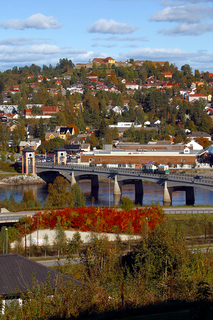
Kongsvinger is a municipality in Innlandet county, Norway. It is located in the traditional district of Glåmdal. The administrative centre of the municipality is the town of Kongsvinger. Other settlements in the municipality include Austmarka, Brandval, Lundersæter, and Roverud.

Sør-Odal is a municipality in Innlandet county, Norway. It is located in the traditional district of Odalen. The administrative centre of the municipality is the village of Skarnes. Other villages in Sør-Odal include Disenå and Sander.

Eidskog is a municipality in Innlandet county, Norway. It is located in the traditional district of Vinger. The administrative centre of the municipality is the village of Skotterud. Other villages in the municipality include Magnor, Matrand, and Åbogen.
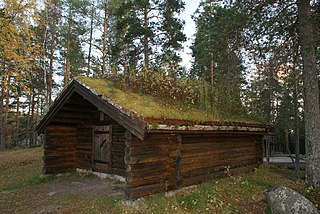
Våler is a municipality in Innlandet county, Norway. It is located in the traditional district of Solør. The administrative centre of the municipality is the village of Våler. Other villages in Våler include Braskereidfoss, Gravberget, and Risberget.

Dovre is a municipality in Innlandet county, Norway. It is located in the traditional district of Gudbrandsdal. The administrative centre of the municipality is the village of Dovre. Other villages in Dovre include Dombås and Hjerkinn. The municipality is bordered on the north by Oppdal municipality, on the east by Folldal, on the south by Sel and Vågå, and on the northwest by Lesja. The highest peak in the municipality is Snøhetta at a height of 2,286 metres (7,500 ft).

Sel is a municipality in Innlandet county, Norway. It is located in the traditional district of Gudbrandsdal. The administrative centre of the municipality is the town of Otta. The municipality also includes several notable villages including Bjølstad, Dale, Høvringen, Nord-Sel, Sandbumoen, Sjoa, and Skogbygda.

Verdal is a municipality in Trøndelag county, Norway. It is part of the Innherad region. The administrative centre of the municipality is the town of Verdalsøra. Some villages in the municipality include Forbregd/Lein, Lysthaugen, Stiklestad, Trones, Vera, Vinne, and Vuku.
Nidaros, Niðarós or Niðaróss was the medieval name of Trondheim when it was the capital of Norway's first Christian kings. It was named for its position at the mouth of the River Nid.

European route E16 is the designation of a main west-east road through Northern Ireland, Scotland, Norway and Sweden, from Derry to Gävle, via Belfast, Glasgow, Edinburgh, previously by ferry to Bergen, Voss, through the Gudvanga Tunnel and the Lærdal Tunnel, Lærdal, over Filefjell to Fagernes, Hønefoss, Gardermoen and Kongsvinger. In Sweden, it passes Malung, Falun and ends in Gävle.
Vinger is a traditional district in Innlandet county, Norway. The 1,677-square-kilometre (647 sq mi) district encompasses the lands that make up Kongsvinger and Eidskog municipalities. It is generally located to the south and east of the town of Kongsvinger and the river Glomma. The main church for the region historically was Vinger Church. The area was once part of Vinger Municipality and it is also included in the Solør, Vinger og Odal prosti which is a deanery within the Church of Norway. This area was also once part of the jurisdictional area of the Vinger og Odal District Court.

The Pilgrim's Route, (Pilegrimsleden) also known as St. Olav's Way or the Old Kings' Road, was a pilgrimage route to the Nidaros Cathedral in Trondheim, Norway, the site of the medieval tomb of St. Olav. The main route is approximately 640 kilometres (400 mi) long. It starts in the ancient part of Oslo and heads north along the lake Mjøsa, up the Gudbrandsdal valley, over the Dovrefjell mountains, and down the Oppdal and Gauldalen valleys to end at the Nidaros Cathedral.
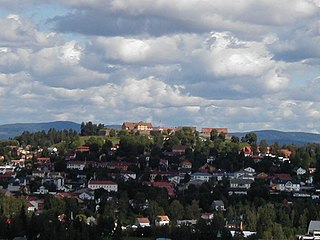
Kongsvinger Fortress is located in the city and municipality of Kongsvinger in the county of Hedmark, Norway. It is situated on a hill west and north of the Glomma river, standing astride the ancient Vinger Royal Road, which connected Norway and Värmland, Sweden as well as on the north-south Norwegian route along the Glomma. As Kongsvinger formed a key junction point for these routes, fortifications were constructed there to protect against invasion from the east.

The Battle of Lier was fought on 2 August 1814 between Sweden and the newly independent Norway as part of the Swedish-Norwegian War of 1814. The battle was the first major action of the war, in which an outnumbered Swedish force attempted to storm the Norwegian entrenchment; the Norwegian victory served as an important part to boost morale among the Norwegian troops. This was the second time during the Napoleonic Wars that a battle had taken place at Lier, the first was in 1808.

The Battle of Matrand was a military battle on 5 August 1814 between Norwegian and Swedish forces as part of the Swedish-Norwegian War of 1814. The battle took place near the village of Matrand in Eidskog and at Skotterud. It was the bloodiest battle of the entire war, in which the Swedes lost more than 340 men, of which 270 were captured; the Norwegians lost around 50 men with 90 wounded and 36 captured.
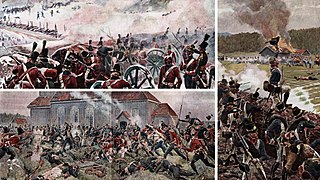
The Dano–Swedish War of 1808–1809 was a war between Denmark–Norway and Sweden due to Denmark–Norway's alliance with France and Sweden's alliance with the United Kingdom during the Napoleonic Wars. Neither Sweden nor Denmark-Norway had wanted war to begin with but once pushed into it through their respective alliances, Sweden made a bid to acquire Norway by way of invasion while Denmark-Norway made ill-fated attempts to reconquer territories lost to Sweden in the 17th century. Peace was concluded on grounds of status quo ante bellum on 10 December 1809.

The Battle of Trangen took place on 25 April 1808 at Trangen in Flisa, Hedemarkens Amt, between Swedish and Norwegian troops, as a part of the Dano-Swedish War of 1808-1809. The invading Swedish troops, led by Colonel Carl Pontus Gahn, were surrounded and forced to surrender by the Norwegian troops under the command of Bernhard Ditlef von Staffeldt. Gahn and around 450 of his troops were captured.
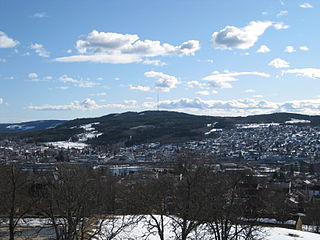
Kongsvinger is a town in Kongsvinger Municipality in Innlandet county, Norway. The town is the administrative centre of the municipality. It is located along the river Glomma, about 80 kilometres (50 mi) northeast of the city of Oslo and about 90 kilometres (56 mi) south of the town of Elverum. The town is about 30 kilometres (19 mi) from the border with Sweden.
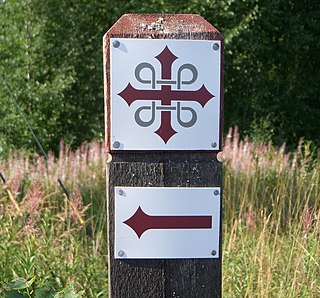
St. Olavsleden, is a pilgrim's way between Selånger outside Sundsvall in Sweden and Nidaros Cathedral in Trondheim in Norway, commemorating Saint Olaf who was King of Norway from 1015 to 1028. St. Olavsleden was one of the Pilgrim's Routes. From the 1970s until 2012, it was called the Mittnordenleden.

The Battle of Lier was fought on 18 April 1808, between Swedish and Norwegian forces, during a Swedish invasion of Norway. The Swedes crossed the border in several brigades, of which the General-in-chief, Gustaf Mauritz Armfelt, followed the first; he arrived at the strong Norwegian position at Lier and decided to attack it, to reach Kongsvinger Fortress. Before launching the main attack, the Swedes made diversionary attacks on the flanks, of which the left one was particularly successful; Bernt Peter Kreutz, the Norwegian commander, reacted by shifting over troops to his threatened flank, which enabled the Swedes to capture his exposed right. Meanwhile, the Norwegian redoubt covering the road was likewise captured, as the Swedish main army swiftly attacked. Kreutz decided to retreat by the evening, fearing he would be cut off from the Kongsvinger fortress. Armfelt did not follow up his victory, instead he remained at Lier until late May, when he received orders to withdraw; the Swedes retreated out of Norway in May–June, after a fruitless campaign.

Vinger is a former municipality in the old Hedmark county, Norway. The 499-square-kilometre (193 sq mi) municipality existed from 1838 until 1964 when it became part of Kongsvinger Municipality. The municipality was located in the Vinger region in the southern part of the county, along the border with Sweden. The administrative centre of Vinger was located in the town of Kongsvinger where Vinger Church is located.